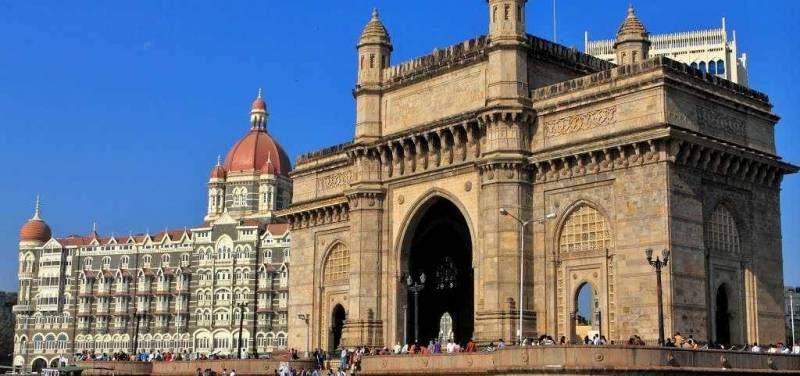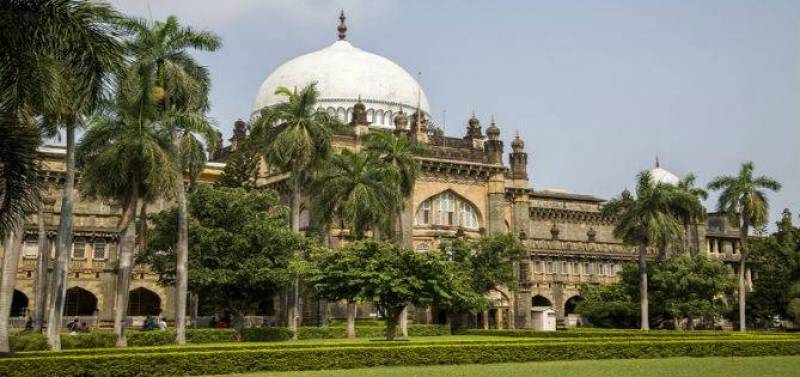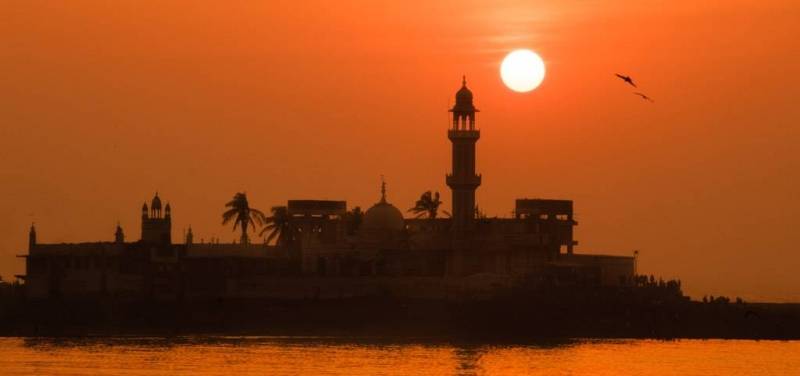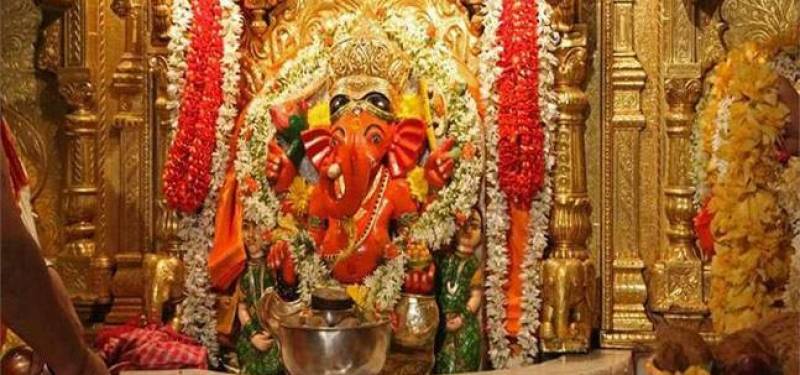Mumbai
Air Medical Transport from Mumbai to Lima

Air medical transport is beneficial as it provides a higher level of medical care to the patient during travel from Mumbai to Lima and also provides a speedier response in case of medical emergencies.
Speed and Injury Protection for Travellers in Mumbai
Helicopter air ambulances are used for the transport of patients from the scene of an injury to a hospital, and for shorter flights between smaller hospitals and trauma centers to specialty hospitals (burn or cardiac centers, for instance). Fixed wing air ambulances (airplanes) are used for transporting patients on longer inter-hospital flights.
Air medical transport is beneficial not only because it provides a higher level of medical care to the patient en-route, but also because it allows for a speedier response. When treating the critically ill or injured, it is always important to minimize the time that patients are out of a hospital and away from a physician’s direct care. Helicopters fly point-to-point, reducing the time out of the hospital, and avoiding the traffic delays experienced by ground ambulances. Fixed wing air ambulances (airplanes) can cover much more distance in less time than a ground ambulance. Sometimes the air ambulance even provides a more comfortable ride, where less than optimal road conditions result in discomfort for some patients.
All aircraft—fifixed wing and helicopter—conduct about 500,000 patient transports in the United States alone each year, saving millions of lives each decade.
Access: Patients isolated from ground EMS or trauma centers by distance, lack of ambulance-passable roads and by terrain features such as mountains, canyons, forests, and islands, benefit greatly from air medical service. Helicopter EMS is also a powerful tool in urban/suburban congestion. Bringing patients home and to more sophisticated medical care from distant sites of illness or injury (called “repatriation”) is one primary use of fixed-wing (airplane) air medical service.
A greater number of communities, particularly those in rural areas, are finding themselves cut-off from access to emergency care because of recent changes in the health care delivery system in this country:
◗ Emergency departments in community hospitals have declined from just over 5,000 in 1992 to approximately 4,600 in 2002, a trend that is expected to continue.32
◗ The number of the most sophisticated trauma centers has declined in the same time period.
◗ Specialty care and specialists are increasingly housed in urban specialty centers and are less available in non-urban settings.
◗ Overcrowding of hospital emergency departments and the lack of critical care and specialty beds often causes hospitals to divert EMS patients.
Due to the above factors, AMS, and especially HEMS, is becoming the health care safety net and access point for many non-urban individuals and communities.
The Perfect Coordination: AMS and the Trauma System
The “Golden Hour” concept provides that along the route to the surgeon’s knife in that fifirst hour, a patient should benefit from an organized EMS system which provides increasingly advanced care (e.g., BLS to ALS to the physician-level care provided by air medical crews).
The complete EMS trauma subsystem must include:
◗ Rapid discovery of the injured patient and the notification of EMS.
◗ Fast response of BLS EMS.
◗ Early activation by trained and authorized requesters.
◗ Timely availability of ALS resources.
◗ Rapid access to physician-level intervention through HEMS response or the closest Emergency Department.
◗ Rapid transport to identified trauma centers.
◗ Inter-hospital transfer to needed specialty care by critical care ground ambulance helicopter or fixed wing air ambulance as
◗ Excellent planning and coordination of EMS resources.
◗ Quality assessment of each component in the combined air and ground emergency response.
A recent paper cites the Maryland system as having these components in place and organized well and calls upon other systems to emulate it. It has been well demonstrated that organized trauma systems with trauma centers save lives. In the early 1980s, the first analytical attempts to determine the life-saving impact on mortality by HEMS response to injury scenes began to appear, largely demonstrating reductions in mortality compared with ground systems.
Since the ’80s, there have been many published medical studies which have attempted, through a variety of means, to assess HEMS’ impact on trauma mortality and morbidity for both scenes and inter-facility flights. Overall, these studies have demonstrated the power of HEMS to affect improvements in trauma-related mortality and morbidity.
As a part of an organized trauma system, HEMS cuts the injury-to- operating-room time significantly. Medical helicopters dispatched simultaneously with ground EMS, can give over 54% of the US population access to a full-service trauma center within 60 minutes that they otherwise would not have.
Medical helicopters also discourage time-costly intermediate stops at small, non-trauma center hospitals. Such stops are detrimental to trauma patients, even where HEMS is called from that hospital for the final leg of the trip.
In the future, improvements in cell phone technology and automatic crash notification (ACN) technology in cars may cut the time required to discover and report a crash injury to almost zero. Using “urgency” indicators generated by automatic crash notification data sent from crashed cars to dispatch centers, along with special medical protocols for assessing the probability of severe injury from the crash, will soon provide a rational and effective way for helicopters to be launched within minutes of an accident, no matter how remote, thereby further improving the speed of EMS response to patients.
Recent study findings demonstrate that:
σ Patients severely injured enough to require inter-facility transfer were four times more likely to die after the HEMS serving that area was discontinued.
σ HEMS reduced injury mortality by 24% in a multi-center study with some 16,000 patients in Boston.
σ Even injury patients in urban areas experienced a transport-time benefit by HEMS in 23% of the cases.
Traumatic brain injury (TBI) is frequently associated with events causing severe, multiple trauma in patients, and is the leading cause of death and disability in children and in adults in their most productive years.48 As with other significant injuries, treatment of traumatic brain injury is time-critical. Outside of urban areas, the reduced availability of the neurosurgical services required to treat traumatic brain injury has posed a challenge to EMS. Recent studies indicate that early advanced care by air medical crews and air transport to definitive care by a neurosurgeon can overcome this challenge, resulting in significant improvement to moderately and severely traumatic brain injured patients.
HEMS is generally useful in trauma care circumstances such as when:
◗ There is an extended period required to access or extricate a remote (e.g., injured hiker, snowmobiler, or boater) or trapped patient (e.g., in a crashed car) which depletes the time window to get the patient to the trauma center by ground.
◗ Distance to the trauma center is greater than 20 to 25 miles.
◗ The patient needs medical care and stabilization at the ALS level, and there is no ALS-level ground ambulance service available within a reasonable time frame.
◗ Traffic conditions or hospital availability make it unlikely that the patient will get to a trauma center via ground ambulance within the ideal time frame for best clinical outcome.
◗ Multiple patients will overwhelm resources at the trauma center(s) reachable by ground within the time window.
◗ EMS systems require bringing a patient to the nearest hospital for initial evaluation and stabilization, rather than by-passing those facilities and going directly to a trauma center. This may add delay to definitive surgical care and necessitate HEMS transport to mitigate the impact of that delay.
◗ There is a mass casualty incident.
In rural and frontier areas, HEMS and fixed-wing aircraft play a particularly important role.
◗ Where the nearest ground ambulance is further, by travel- time, from the scene of injury than the nearest HEMS, the air medical service may be the primary ambulance for critically ill and injured patients in that area.
◗ Where the nearest ALS-capable medical facility is further, by travel-time, from the scene of the injury that is a HEMS or a fixed-wing provider, the air medical service may be the primary ALS provider for critically ill or injured patients in that area.
◗ Where blood supplies or availability of other medical supplies or equipment are limited or non-existent, jeopardizing the care of the patient, the air medical service can bring these resources to the hospital with the patient.
◗ The air medical service can transport specialized medical staff (surgical, emergency medicine, respiratory therapy, pediatric, neonatal, obstetric, and specialized nursing staff ) to assist with a local mass casualty event or to augment the rural/frontier hospital’s staff in stabilizing patients needing specialized care before transport.
Fixed Wing Aircrafts
Fixed wing aircraft are mainly utilized for transportation of a patient from a smaller airstrip in a small town to large city airports where they are admitted for higher treatment.
Fixed Wing Aircrafts could be a Turboprop Aircrafts like the King Air B 200 or Pilatus PC 12 or Jet Aircraft like the Citation Jet or a Learjet.
It could also be a large jet like the Challengers or Gulfstreams which can fly between continents to take critical patients to their home country.
For the patient who can afford - we can organize the patient transfer on a Business Boeing Jet.
If you need an Air Ambulance from Mumbai to Lima - Do get in touch with us. If urgent - Call Us or Email us and we promise to respond back immediately.
Give us the exact location of the patient at Mumbai - the medical report and we promise to provide the best solution to transporting your loved one to
Lima in the most affordable manner.
When Time is Life
Your Partner in Travel
From Mumbai to Lima
Our Process

Our Process

About Mumbai
Location of Mumbai:
Latitude: 19.017Longitude: 72.857
Details of Airport Chhatrapati Shivaji International Airport in Mumbai :
IATA: BOMICAO: BOM
Latitude: 19.08869934
Longitude: 72.86789703
Altitude: 39
Time (UTC): 6
DST: N
Timezone: Asia/Calcutta
Country: India
Mumbai (formerly called Bombay) is a densely populated city on India’s west coast. A financial center, it's India's largest city. On the Mumbai Harbour waterfront stands the iconic Gateway of India stone arch, built by the British Raj in 1924. Offshore, nearby Elephanta Island holds ancient cave temples dedicated to the Hindu god Shiva. The city's also famous as the heart of the Bollywood film industry.
Mumbai is a tertiary care center and receive patients from North East and South India for advanced Treatment to all major tertiary care centers.
Advanced Eye Hospital and Institute
Asian Heart Institute
B
B.D. Petit Parsee General Hospital
Bhabha Hospital
Bhaktivedanta Hospital
Bombay Hospital
Breach Candy Hospital
C
Cama Hospital
Cooper Hospital
Currae Hospital
G
Gokuldas Tejpal Hospital
H
Holy Family Hospital, Mumbai
Holy Spirit Hospital (Mumbai)
Hurkisondas Hospital
J
Jaslok Hospital
JJ Hospital
K
KEM Hospital
Kokilaben Dhirubhai Ambani Hospital
L
Lilavati Hospital and Research Centre
Lokmanya Tilak Municipal General Hospital
M
Masina Hospital
N
Nanavati hospital
P
P.D. Hinduja National Hospital and Medical Research Centre
Parsi Lying-in Hospital
Prince Aly Khan Hospital
R
Rajawadi Hospital
S
Saifee Hospital
St George Hospital, Mumbai
SevenHills Hospital
Shroff Eye Hospital
Shushrusha Citizens' Co-operative Hospital
T
Tata Memorial Centre
U
Umrao Hospitals

The Gateway of India is, without doubt, one of the most popular tourist hotspots of Mumbai. Sitting proudly on the Apollo Bunder, it overlooks the Arabian Sea. It is one of the defining monuments of the city of Mumbai and was built in the year 1924. The construction was undertaken by the famous architect George Wittet, to commemorate the visit of King George V and Queen Mary to Mumbai. The imposing structure of the monument is a beautiful confluence of Indian, Arabic and Western architecture and has become a popular tourist hub in the city. It is also the starting point of a number of ferry services that ply to the historic Elephanta Caves.
Nicknamed 'Mumbai's Taj Mahal', the foundation of this landmark was laid in 1911 and it was inaugurated 13 years later in 1924. The structure in itself is a made of yellow basalt and solid concrete and is embellished with numerous Muslim and Hindu motifs as well. The basalt arch of the Gateway served as the entry and exit access to India through waterways before independence and was the exit point from where the last British ship left India for England. There are statues of Swami Vivekananda and Chhatrapati Shivaji that have been installed near the Gateway as well. The view from the sea of the Gateway complex, especially at night is quite ethereal and beautiful. The Gateway of India is thus, not only a historic artefact but an example of marvellous architecture in itself!
History of Gateway of India
The land on which the Gateway now stands once belonged to a jetty that was primarily used by the fishing community of the area. Seeing its viability as a landing area, it was renovated to serve as a pier for British governors. Soon enough, it was decided that a grand gateway will be built here to welcome King George V and Queen Mary to Mumbai, and the foundation of the same was laid down March 31, 1913, by the Governor of Bombay, Sir George Sydenham Clarke. However, the final design of the Gateway was only sanctioned on March 31, 1914, by George Wittet. The constructions formally began in 1920 and it took almost four years to complete the construction of the monument.
Built in Indo Saracenic style, the Gateway of India was designed by Scottish architect George Wittet. The design is a combination of Hindu and Muslim architectural influences along with a Roman triumphal arch, which stands at a height of 26 metres. It is built of yellow basalt and concrete and the stone was sourced locally. The arch is flanked by two large hallways that have the capacity to accommodate as many as 600 people. On the other hand, the central dome of the gateway is inspired from Muslim architecture style and has a diameter of 48 feet with the apex reaching 83 feet. The gateway also has meticulously designed honeycomb structures which further support four spires that grant a unique symmetry to the facade. Steps behind the archway give an expansive view of the Arabian Sea as well.

Prince of Wales museum, Mumbai Overview
The Prince of Wales Museum is a splendid structure situated in Mumbai and is regarded to be one of the heritage buildings of the city. The foundation stone of this edifice was laid down by the Prince of Wales on the 11 November 1905, and it was established as a museum on 10 January 1922. The facade of the museum is a sight to behold in itself and sits in the midst of an expansive green garden. Adorned with stunning stone and lattice work, the architecture of the Prince of Wales Museum is a blend of Indian, Mughal and British engineering styles. Inside, the museum holds almost 50,000 of some of the most exquisite artefacts relating to the rich and diverse history of India.
Now known as 'Chhatrapati Shivaji Maharaj Vastu Sangrahalay', The Prince of Wales Museum is a Grade I Heritage Building of the city and is counted amongst one of the most prominent museums of India. The complex exhibits a myriad collection of ancient artefacts, artwork and sculptors of the country which give a unique insight into our past. The building also underwent a major renovation after which several new galleries adorning the artworks of Hindu God Krishna, textiles and Indian traditional costumes were opened. Preserved in its best form, the Prince of Wales Museum is a wonderful manifestation of India's glory and rich past.
National gallery of Modern Art, Mumbai Overview
A paradise for art lovers, National Gallery of Modern Art (NGMA), Mumbai is a famous art museum possessing a magnificent collection of paintings, sculptures and artefacts since 1996. The multitude of artwork present in this charismatic gallery has drawn millions of visitors and left them awestruck. It is governed by the Department of Culture, Government of India and has over the period become a popular tourist attraction as it very convincingly depicts the modification of artwork in the field of visual and plastic arts. A blend of art and culture, this gallery houses the artworks of phenomenal sculptors, artists and painters including the legendary Pablo Picasso who is considered as the epitome of art and painting. The oldest artwork is known to be around 160 years old. The ancient artefacts such as statues and mummies from Egypt have also a played a crucial role in rousing the curiosity of the visitors.
The National Gallery of Modern Art also organises various art exhibitions which provide an intriguing platform to both the artists and the art lovers as the artists get a remarkable opportunity to showcase their talent while the art lovers can explore and quench their thirst for art. The gallery is located near Regal Cinemas in Colaba, South Mumbai. It showcases some of the oldest artworks, dating back to 1857 and is considered one of the best in India.

Haji Ali Dargah, Mumbai Overview
Situated on the backdrop of a beautiful view of the Arabian sea is the shrine of Haji Ali, dedicated to the wealthy merchant turned who gave up his worldly belongings and turned into Muslim Sufi saint after a trip to Mecca. Haji Ali Dargah is located on a small islet that is off the southern coast of Mumbai near Worli. People from all walks of life and religions come here to seek blessings. The Dargah can only be accessed during the low tides via a causeway that is surrounded by the sea on all sides. At night, the view of the shrine lit up in the distance with nothing but the sea around it, is a divine sight.
Built of glass, the tomb is a beautiful illustration of the Indo-Islamic style of architecture. A marble courtyard contains the central shrine. The tomb within the mosque is roofed by a brocaded red and green cloth, supported by an exquisite silver frame and marble columns. The main hall has marble pillars engraved with creative mirror work: blue, green, yellow chips of glass arranged in varied designs and Arabic patterns which spell the ninety-nine names of Allah. As per Islamic customs, there are different praying rooms for ladies and gents.
Haji Ali belonged to Bukhara, which lies in present-day Uzbekistan. This shrine has a mystical story attached to it. According to legends, Sayyed Peer Haji Ali Bukhari once came across a poor woman crying on the road and holding an empty vessel. Upon inquiring about the matter, she told him that she had spilled the oil she was supposed to be carrying home and was now afraid that her husband will punish her. He then accompanied her to the spot where she had spilled the oil and prodded the ground and oil came gushing out. The woman was delighted and went home happily. Later, recurrent dreams indicating that he had injured the Earth haunted him and his health began to deteriorate. He then decided to travel to India and decided to stay here so as to spread the word of Allah and Islam.
From that point of time till the end of his life, Haji Ali dedicated his life spreading the wisdom of Allah and devotees would regularly visit him. Before he died, he instructed his followers that they shouldn't bury him immediately, rather they should drop his shroud in the ocean and bury him where it is found. In accordance with his wishes, the Haji Ali Dargah was built in the year 1431. According to another belief, Haji Ali donated all his wealth for a journey to Mecca and died in between. Miraculously, the casket carrying his body floated back to Arabian shores and got stuck in the twine of rocky islets just off the shores of Worli.

The Siddhivinayak Temple in the Prabhadevi area is a revered shrine dedicated to Lord Ganesha and is one of the most significant and frequented temples in Mumbai. This temple was built in the year 1801 by Laxman Vithu and Deubai Patil. The couple did not have any children of their own and decided to build the Siddhivinayak temple so as to fulfil the wishes of other infertile women. Interestingly, the statue of Lord Ganesha here is believed to be self-manifested and grants wishes.
The Temple has a small sanctum housing the idol of Shri Ganesha, which is about two and a half feet wide and made out of a single piece of black stone. The temple has attained a popular status not only because it is believed that the Ganesha in the temple is especially revered, but also because of its popularity with Film stars and the bigwigs of the industry. It is also the richest temple in Mumbai as it begets INR 100 Million in donations each year from devotees across the world.
The story behind the construction of the Siddhivinayak temple is that of faith and belief in the Lord. The building was funded by rich Agri woman named Deubai Patil, who did not have any children of her own. She decided upon building a temple dedicated to Lord Ganesha so that he may fulfil the wishes of other childless couples and bless them with children. The construction of the Siddhivinayak temple was completed on 19 November 1801, with the original structure being a square edifice adorned with a dome - shaped spire. Ramakrishna Jambhekar Maharaj who a disciple of the Hindu saint Akkalkot Swami Samarth, buried two idols in front of the present idol upon the instructions of the Swami. As was prophesied by Swami Samarth, a Mandar tree sprouted from the buried idols with the image of Svayambhu Ganesha in its branches after a period of 21 years.
The imposing structure of Shree Siddhivinayak temple comprises of a primary 'Kalash' which towers to a height of 12 feet, three reaching up to 5 feet and 33 others which stand at a height of 3.5 feet. Thus, 37 gilded domes embellish the main temple complex. The old part of the Siddhivinayak temple has a hall, the main sanctum, a verandah and a water tank as well. The new complex of the temple was built as a part of renovations so as to enhance the magnificence of this shrine. The architect Ar. Shri. Sharad Athale of SK Athale & Associates made a study of the temples in Rajasthan and Tamil Nadu before finalising the design of the temple. After making the necessary arrangements, the construction of the Siddhivinayak temple commenced in the year 1990. The old idol was kept intact whilst a multi angular six - storey structure was built over the gold plated domes. Three main entrances leading up to the interior were constructed and the crown of the temple was redesigned as well. After meticulous work that was spread over a timeframe of three years, the construction gave way to the Siddhivinayak temple as we know it today.

Global Vipassana Pagoda, Mumbai Overview
It is tough to imagine that one of the quietest and most peaceful spaces can exist right in the middle of the busy suburbs of Gorai in Mumbai. The Global Vipassana Pagoda is a meditation hall shaped like a dome with a capacity to seat of 8,000 devotees and Vipassana practitioners. Along with admiring the serenely mesmerizing Pagoda located on a peninsula between Gorai creek and the Arabian Sea. Another interesting facet of the monument is that it has been completely through donations. Visitors can take a short 10-minute Aanapana Meditation session to experience how invaluable the technique of meditation is and then decide if they want to enrol for a long term course. No matter what the verdict is, a trip to the Global Pagoda will be worthwhile.
The Global Vipassana Pagoda was built as a token of gratitude towards a Vipassana teacher and Accountant General of Independent Burma, Sayagyi U Ba Khin, who was instrumental in bringing Vipassana back to its country of origin after it ceased to exist in India. Many visitors frequent the Global Pagoda during the stressful and painful phases of their lives and manage to achieve total harmony in the chaotic times of today. It is also considered to one of the seven wonders of the state of Maharashtra.
The Global Pagoda's planning began in 1997, but the actual construction started only in 2000. The idea of constructing a Global Pagoda was proposed by Shree S.N.Goenka, to spread the true teachings of Lord Buddha. Over the years, religious dogmas prevailed, and the correct path of Dhamma was forgotten. These lessons had to be instilled again in the minds of people who were blinded by the religious dogmas and the introduction to an improved way of life was required to increase tolerance and maintain peace and harmony in the world.
Acharya Goenkaji firmly believed that the Pagoda would serve as a helpful vehicle to spread the true meaning of Dhamma and inculcate the age-old technique of Vipassana that ceased to exist nearly two million years ago. For the exemplary work put in by Acharya Goenkaji, he was awarded the title of Padma Bhushan in the year 2012 on the occasion of Republic Day. A little over a year later, on 6th June 2013, the Global Pagoda was included in the list of the Seven Wonders of Maharashtra for its development, architecture and purpose.
The Global Vipassana Pagoda has been constructed on 13 acres of land and is an illustration of the traditional Buddhist architecture with traditional Burmese designs. The Burmese designs have been included in the structure as a sign of respect and gratitude towards Myanmar for preserving the practice of Vipassana Meditation. The dome-shaped pagoda is a combination of ancient and modern Indian technology, and its shape is a replica of the Shwedagon Pagoda (Golden Pagoda), Myanmar, which makes the structure strong enough to stay put for at least a thousand years.
The entire structure is covered in gold coloured paint, and the spire or the shikhara of the pagoda is covered in real gold that was donated by the Burmese. The spire is topped with a decorative piece that resembles an umbrella. The humongous inner dome enables 8000 people to practice Vipassana meditation together at one time. The entrance doors are made of wood that has been hand-carved intricately in Myanmar.
The foundation of the structure is made of Basalt rocks, and the dome is made from sandstone that was brought from Rajasthan. Each sandstone block weighs around 600 to 700 kilograms and is secured in place with the help of bricks designed to interlock. These uniquely designed bricks and lime mortar hold the sandstone in place and help the structure stand for several years. The large pillar-less dome, in the centre, has a height of 29 meters. The entire structure of the pagoda is 96.12 meters tall. The interior of the pagoda is hollow and serves the purpose of a huge meditation hall; which covers an area of 6000 square metres. The top of the pagoda is completed with a large crystal.
Beginner Course: The beginner course is a 10-day course during which they have to follow the course rules and regulations that include adhering to the timetable, not harming any living being, no sexual misconduct, no lies and no consumption of intoxicants. The students practice ten hours of meditation every day (includes regular breaks). The first three days are to develop concentration through Aanapana and the next seven days are for complete Vipassana Practice. On the last day, the Metta Bhavana technique of meditation is taught and practised. These courses are bilingual and can be attended by participants who do not understand regional languages.
10-day Executive Course: These courses are introductory courses planned especially for Business Executives, Entrepreneurs and Government Officials
Old Students Short-term Course: The participants who have completed at least one 10-day program are considered as old students. They can enrol for a 3-day short course each year to stay updated with the technique.
Advanced Courses: This includes the same timetable as that for the beginner courses, however, the duration and the intensity of meditation is a little more advanced. Participants can choose between 20, 30, 45 and 60 days of course periods.
About Lima
Location of Lima:
Latitude: -12.048Longitude: -77.0501
Details of Airport Jorge Chávez International Airport in Lima :
IATA: LIMICAO: LIM
Latitude: -12.0219
Longitude: -77.114305
Altitude: 113
Time (UTC): -5
DST: U
Timezone: America/Lima














